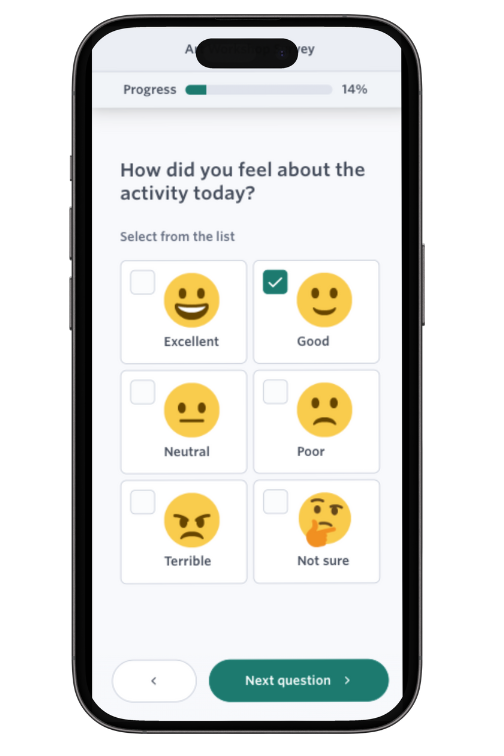Capturing data from children and young adults is crucial for organisations that wish to tailor programs and activities to this demographic. However, crafting surveys that effectively capture this feedback presents unique challenges. Culture Counts Marketing Manager, Lisa Wallace, offers some tips to help you create surveys that are not only engaging and fun but also yield consistent and valuable feedback.
Keep it short and relevant
When designing surveys for a younger audience, it’s essential to be concise and focused. The attention spans of younger individuals can vary, and lengthy surveys might lead to disengagement. To avoid survey fatigue, identify your core objectives and then simplify the language in the relevant survey.
Understand what you are looking for
The key in any survey – whether it is for adults or children – is to zero in on the specific feedback you are looking for. This could range from assessing the impact of your program on their creativity and learning to understanding how inclusive they find your activities. Tailoring your questions to directly address these aspects ensures that the survey remains relevant and engaging for the respondents.
It is also important to differentiate between question types. For example, outcome-related questions should aim to measure the impact of your program on aspects like creativity, learning, and inclusion. On the other hand, experience-based questions should focus on the participants’ overall experience with the program. This distinction helps in structuring the survey to cover all essential facets of participant feedback.
The Culture Counts Evaluation Platform survey templates provide a great place to start building your surveys. For more information, visit our blog.
Consider age group and abilities
The design of your survey must take into account the age group and learning abilities of your audience. Younger children might require simpler language and more direct questions, while teenagers might engage better with more thought-provoking queries. It’s sometimes beneficial to create different versions of the survey for different age groups, ensuring that each is appropriately tailored to its intended respondents. You may also want to consider creating a paper version of your survey, particularly if you will be distributing to schools or large groups of children. This also allows for those who may not be as experienced with technology (i.e. tablets) to provide feedback.
Use a proxy survey
In some cases, a proxy survey can be a valuable tool. This type of survey is completed by an adult on behalf of the young respondent – such as a toddler or child. The key here is to craft questions that allow adults to accurately convey the thoughts and experiences of the child. This approach can be particularly useful for gathering more in-depth feedback that younger participants might struggle to articulate.
Use simple and inclusive language
The use of everyday words and the avoidance of complicated expressions ensure that the questions are easily understandable. Clear and straightforward language helps in preventing any confusion or misinterpretation of the questions, thereby ensuring that the feedback collected is as accurate and useful as possible.
Make it engaging

Emojis can be a fun and effective way to connect with younger respondents. They can make surveys appear more friendly and relatable, potentially increasing engagement.
In the screenshot example, emojis are used to gain feedback about the participant’s experience.
Emojis can be added to the questions in the Culture Counts Evaluation Platform. You can just simply copy and paste the emoji from a library like Emojipedia into the question edit field.
Are you interested in finding out more about Culture Counts? Reach out to our friendly client team for an obligation-free chat.






